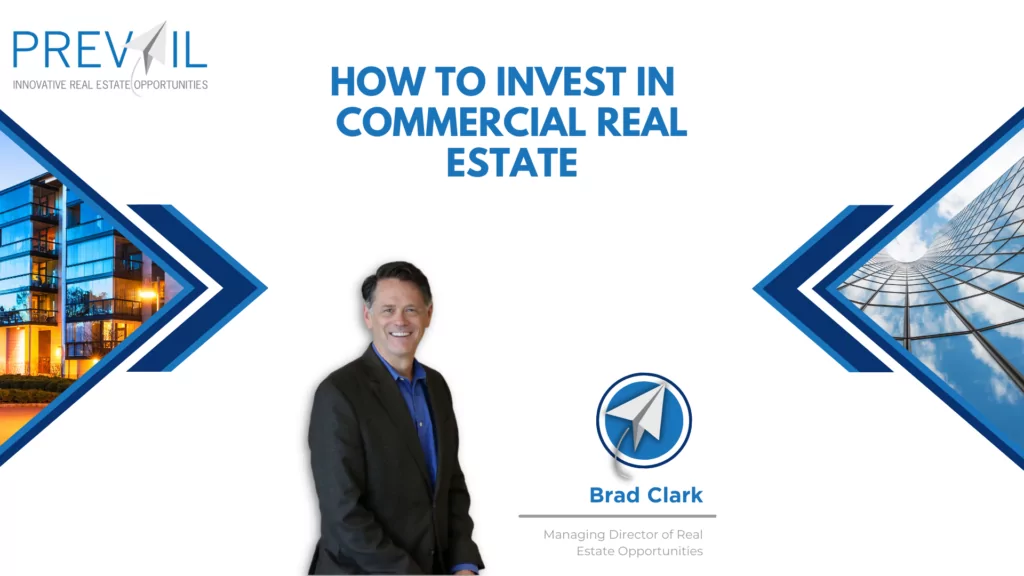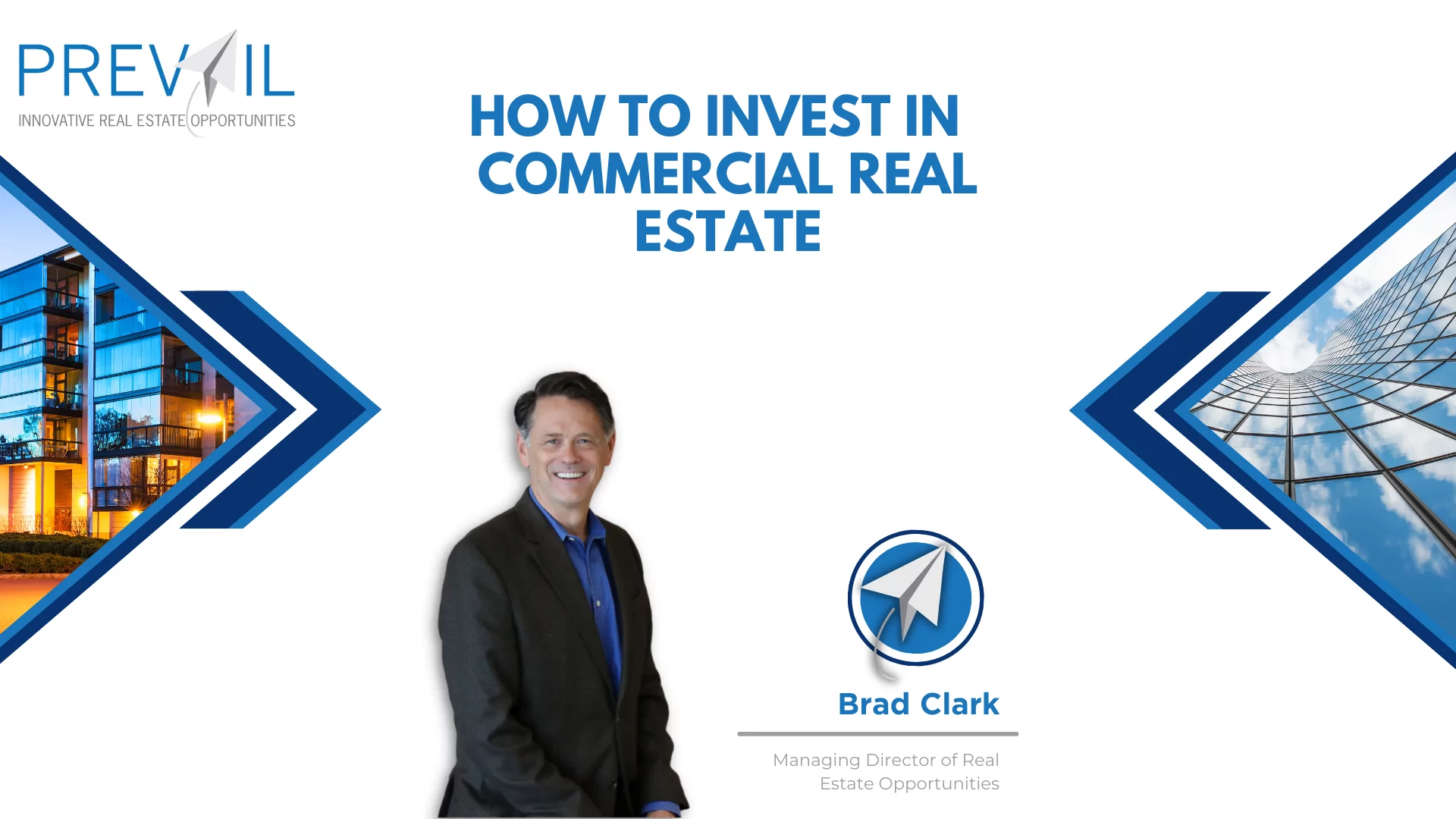No matter your experience, country of origin, or current location, the basic process of investing in residential real estate rentals is the same. You choose the market and neighborhoods, determine how many bedrooms and bathrooms you’re looking for, get together with a lender and a broker, tour potential properties, and then make an offer.
However, when it comes to investing in commercial real estate syndication (group investment), the process can be entirely foreign, especially if you’ve never invested in syndications before. Syndications are private investments and many people have not heard about them and their wealth-building power.
For this reason, let’s go step-by-step through the process together, from start to finish, so you can invest confidently in your first real estate syndication.
Here are the basic steps of how to invest in commercial real estate syndication:
- Determine your investing goals
- Find an investment opportunity that fits
- Reserve your spot in the deal
- Review the PPM (private placement memorandum)
- Send in your funds
Step #1 – Determine Your Investing Goals
Once you decide you want to invest in a real estate syndication, consider both your short-term and long-term investing goals so you can be sure to find investment opportunities that best fit your personal goals.
Think about the amount of capital you have to invest, the length of time you want that capital invested, tax advantages you’re looking for, and whether you are investing primarily for ongoing cash flow to help offset your income, long-term appreciation, or a hybrid of both.
Step #2 – Find a Fitting Investment Opportunity
Once you’ve determined your investing goals, aim to find a deal in alignment with your goals.
There are countless real estate syndication opportunities and markets out there. We will typically provide an executive summary, full investment summary and provide a full 360-degree view of the asset, the market, the deal sponsor team, the business plan, and the projected financials.
Be sure to take time to properly vet the track record of the operating team, ask them your questions, and read between the lines of any investment materials provided. Take a look at things like whether the business plan has multiple exit strategies, whether there are signs of conservative underwriting, and double-check whether the proposed business plan makes sense given the asset class, submarket, and current economic cycle.
Research market trends in job and population growth. Review minimum investment requirements, projected hold time, and projected returns. Finally, attend or review the investor webinar and make sure you get your questions answered.
Basically, at this stage, look for any reason not to invest in the deal.
Step #3 – Reserve Your Spot in the Deal
Once you’ve found an opportunity you want to invest in, it’s time to reserve your spot in the deal. Usually, deals are filled on a first-come, first-served basis, so you’ll want to take the time to ask questions and do your research before a live deal opens up.
Often, investment opportunities can fill up within mere hours, which is why it’s important to have completed research, solidified your investment value, and have clear goals. That way, when the opportunity opens up, you can jump on it.
Typically, the first step is to make a soft reserve, which holds your spot while you take time to review the investment materials. The soft reserve does not lock you in the deal; it merely saves you a spot in the deal while giving you more time to review the fine details of the investment and conduct your own due diligence.
Step #4 – Review the PPM
Once you’ve decided to invest in a deal, the first official step is to review and sign the PPM (private placement memorandum).
This legal document provides in-depth details about the investment opportunity, the risks involved, and your role as an investor. Although reading legal jargon may be no fun, it’s very important you gain a full understanding of the risks, subscription agreement, and operating agreement pertaining to the investment.
As part of signing the PPM, you’ll also decide how you’ll hold your shares of the entity holding the asset and whether you want your distributions sent via check or direct deposit.
Step #5 – Send in Your Funds
Once you’ve completed the PPM, the final step is to send in your funds. Typically, you’ll find wiring instructions in the PPM document. This is probably the most daunting step – although you feel as if you’re sending your hard-earned capital off into the ether, we promise you’re not! We’ll be here to answer all your questions and guide you the whole way.
Pro tip: Before wiring your funds, double-check the wiring information, and let the deal sponsor know to expect it so they can be on the lookout.
Conclusion
After reading this article, the process of investing in a real estate syndication should be more clear, and perhaps, a little less intimidating for you.
Real estate syndications are more of a set-it-and-forget-it type of investment, so your active participation is upfront, during the time you’re choosing a deal, reviewing the investor materials, reserving your spot, reading and signing the PPM, and wiring in your funds.
The great news is, after this initial process, you can sit back and relax in comfort knowing you’ve found security, community, and freedom with this single, fabulous process.
Don’t worry if this process still seems a bit daunting, though. That’s what we’re here for, and we’ll be with you every step of the way as you invest in your first real estate syndication. For more insight into our favorite markets thus far, give us a call; we can get to know your objectives, answer your questions, and help expand your confidence and knowledge in real estate syndication investments. Talk to you soon!
This communication is neither an offer to sell nor a solicitation of an offer to buy any security. An offer may only be made via a written offering document by Prevail Innovative Real Estate Opportunities, LLC (“Prevail”). Prevail will provide such offering documents (“Documents”) only to qualified accredited investors and has prepared this communication solely to enable you to determine whether you are interested in receiving additional information about it or the real estate project summarized above (the “Project”). This communication must be read in conjunction with the Documents prior to making any investment decision. Information about the Project contained herein has not been audited or reviewed by any third party. While projections about the Project’s future performance is based on Prevail’s experience and good faith judgments, the recipient should understand that projections are based on numerous assumptions, including that the current economic environment continues, that existing asset performance trends will continue to track business plans, that historical behavior of the Project’s property type will not change, that perception of market opportunities for disposition will hold true, and that the competitive landscape within which the Project operates will not change. Returns to investors would be contingent upon numerous events occurring and subject to considerable risks. Significant assumptions were made by Prevail to calculate the presented projections, including assumptions on the amount of leverage used by the Project, the Project having sufficient assets and cashflows, debt service and capital expenditures, the continuation of favorable leasing terms, the operating costs for the Project, the costs of taxes and insurance, the absence of claims against the Project, that lease terms (including rental rates) continue, that projected occupancy and rollover rates continue, that management and other expenses remain constant, and that property-level debt will not need to be refinanced at less favorable terms. The Project’s future capitalization will be contingent upon numerous events occurring and subject to considerable risks. The occupancy and rollover rates of the Project will be dependent upon many factors beyond the control of the Project or Prevail. Any expression of targeted rates is merely a statement of a goal. Significant assumptions were made by Prevail to calculate the presented occupancy and rollover rates. Many factors can impact the Project’s after-tax returns, including the risk that tax laws may change. A myriad of factors may impact the Project’s ability to achieve any returns. Any number of factors could contribute to results that are materially different. All investment opportunities presented by Prevail involve substantial risk and may result in the loss of some or all of your investment.



















